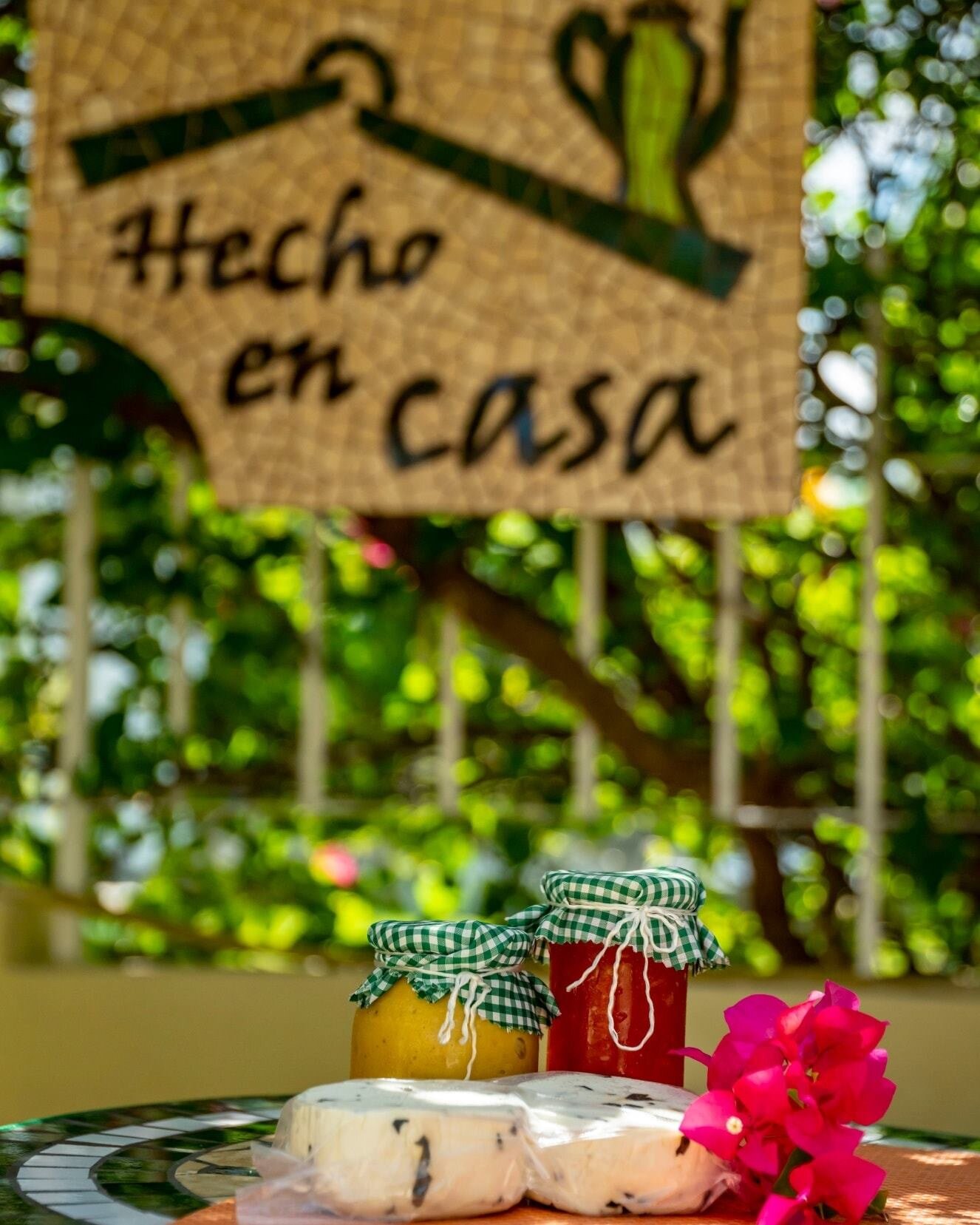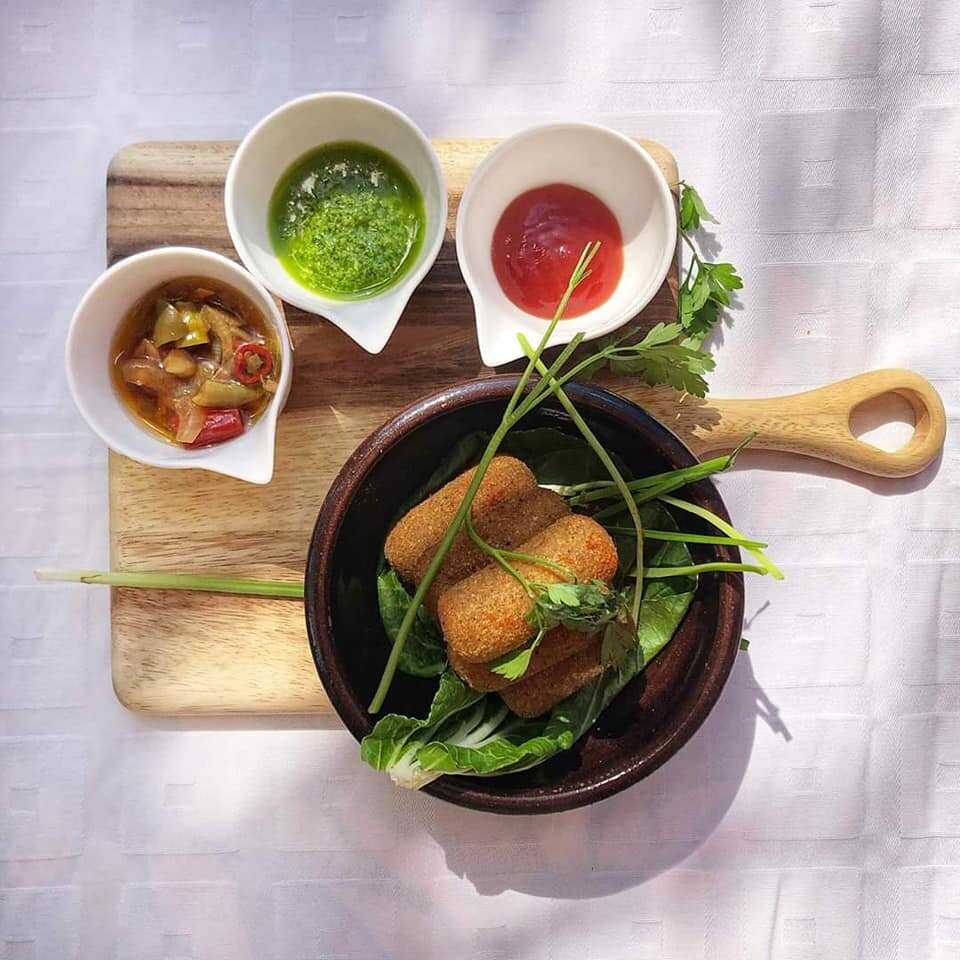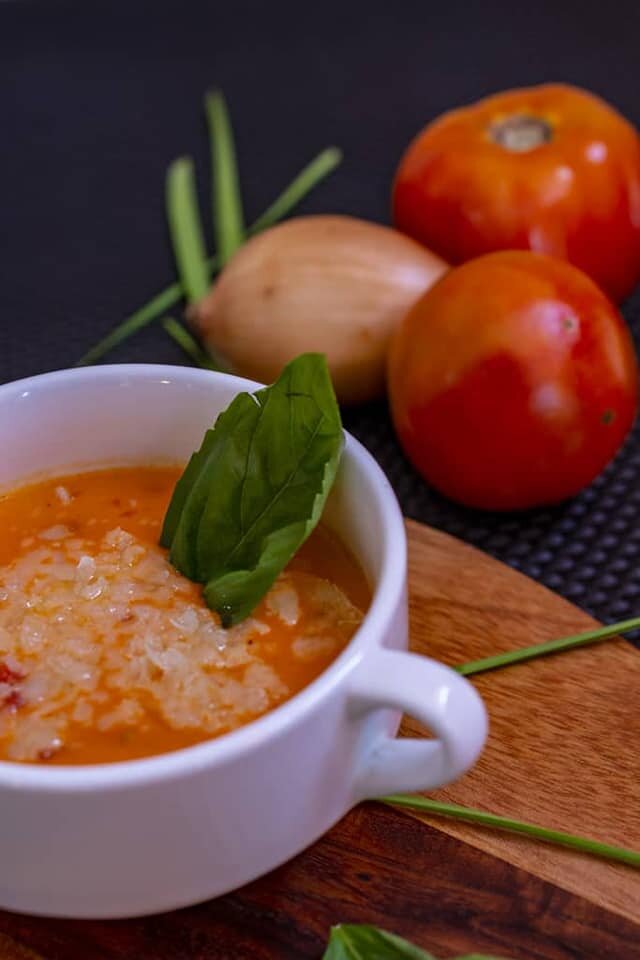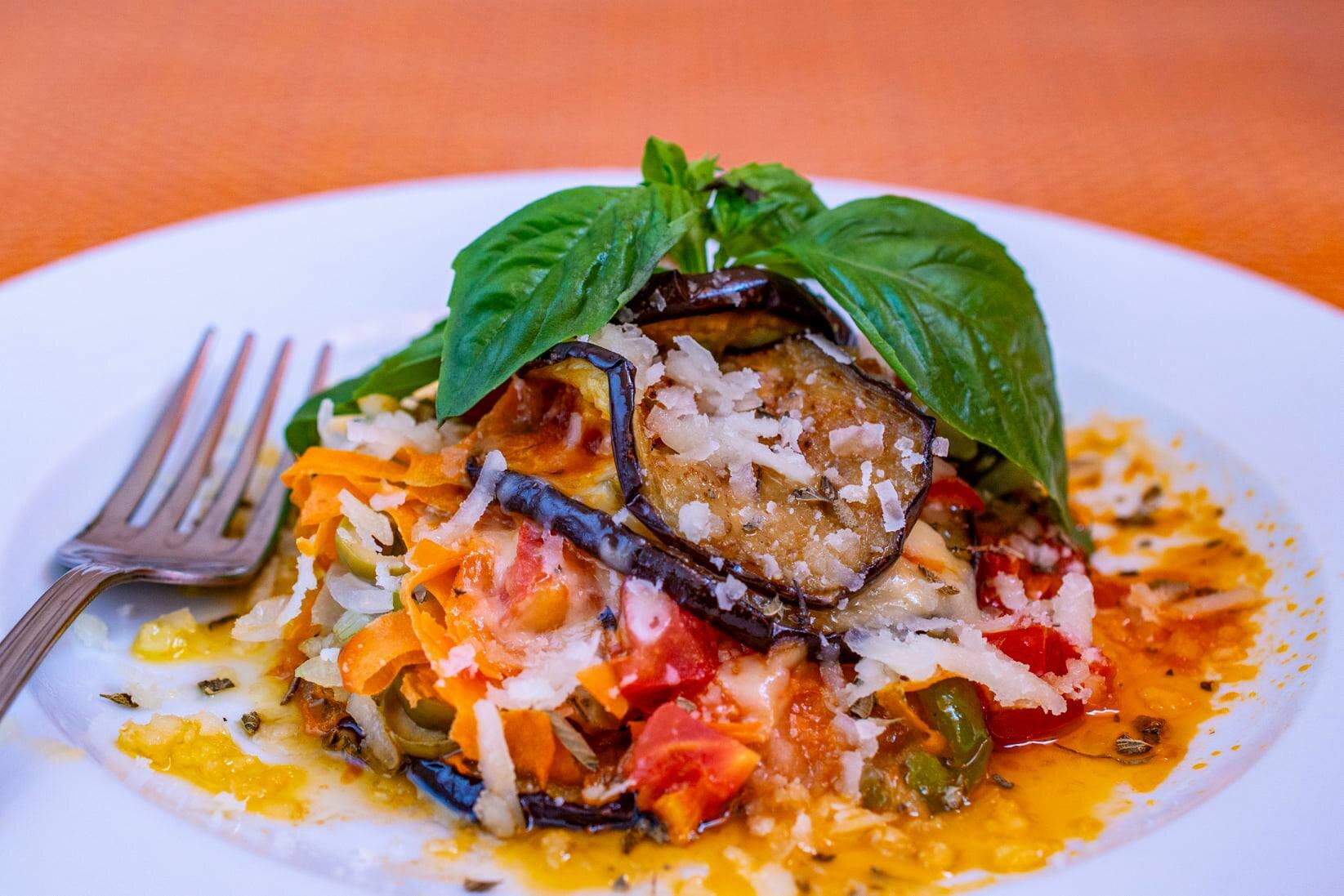Hecho en Casa: Experience What Homemade Means in Cuba
Chef and Owner, Alina Menéndez Lamas, of Hecho en Casa
In the well-known Cuban novel, Paradiso (1966) by José Lezama Lima, several passages highlight traditional Cuban food. When reading this, it paints the image of a lively, family atmosphere and the hustle and bustle of preparing the most important meal of the day — lunch. It’s during these literary depictions that the reader can grasp the true significance of Cuban food history. The process of cooking, setting the table, serving guests, and finally eating the meal is recounted as if they were part of a ritual. You get a real sense of Cubans’ passion for pastries, the richness of a grandmother's traditional custard, and the necessity of ending each meal with Cuban coffee and/or tobacco. These rituals are ingrained in Cuban food and to truly experience a taste of Cuba, one must seek out homemade, authentic cuisine and immerse yourself in this lifestyle. But the question is, “Where to go?”
Chef and Owner Alina Menéndez Lamas
Listening to Chef and Owner, Alina Menéndez Lamas, speak so passionately about Hecho en Casa, her restaurant dedicated to making homemade, traditional Cuban food, triggers images of the book Paradiso. As she shares about her grandmother, I can easily imagine them cooking together in the kitchen during a time in which you are unknowingly inheriting the customs and tastes of your grandparents. It’s a beautiful thing. With this being said, Hecho en Casa isn’t just a restaurant, it aims to create an experience that conjures feelings of romanticism and nostalgia, along with sharing food that embodies a deep respect for Cuban cuisine and traditions.
Hecho en Casa was not created to simply be a restaurant that alleviates hunger, churns out guests, and garners profits. It was established to connect with memory itself — with the memories of the flavors of childhood and moments when family, friends, and food are mixed together. Its mission is to inspire the reverence of traditional Cuban food in context with emerging Cuban cuisine that’s inevitable in all evolving societies.
There are many international influences that impact Cuban dishes. It would be a huge mistake to think that authentic Cuban food can be represented exclusively with roasted pork, moros y cristianos, and yuca con mojo. Fernando Ortiz Fernández, a Cuban writer, anthropologist, and well-regarded intellectual, compared Cuba to an ajiaco (a traditional stew) in a lecture delivered at the University of Havana in 1939 and published in 1940:
Ajiaco, Cuba’s national dish
“This is Cuba, the island, the pot placed in the fire of the tropics, which the other afternoon was painted for us with fine artistry by Dr. Massip. An unusual pot, this land of ours, just like the pot of our ajiaco, which must be made of clay and quite open. Then, the lively fire of the flame and the slow fire of the embers, to divide the cooking in two, just as happens in Cuba, always under the fire of the sun but with the rhythm of two seasons, rains and dryness, heat and mild weather. And therein go substances of the most diverse types and origins. The Indians gave us corn, the potato, malanga, the sweet potato, yuca, the chili pepper that serves as its condiment, and the white cassava xao-xao with which the good Creoles of Camagüey and Oriente decorate the ajiaco when they serve it. Such was the first ajiaco, the pre-Columbian ajiaco, with meat from hutias, from iguanas, from crocodiles, from majá snakes, from turtles, from sea snails, and from other hunted and fished creatures that are no longer appreciated for the palate. The Castilians cast aside these Indian meats and replaced them with their own. With their pumpkins and turnips they brought fresh beef, cured beef, smoked meats, and pork shoulder. And all of this went to give substance to the new ajiaco of Cuba. Alongside the Whites of Europe arrived the Blacks of Africa, and they brought us bananas, plantains, yams, and their cooking technique. And then the Asians with their mysterious spices from the East. And the French with their balancing of flavors, which softened the caustic quality of the savage chilies. And the Anglo-Americans with their domestic machines that simplified the kitchen—and who want to metallize and convert into one of their “standard” kettles the earthen pot that nature gave us, along with the flush of the tropics to heat it, the water of its skies to compose its broth, and the water of its seas for the sprinklings of the salt shaker. Out of all this our national ajiaco has been made.”
- Fernando Ortiz Fernández
It must be noted that food in Cuba has suffered in recent decades and even today, as periods of scarcity (such as the Special Period of the 1990s and during the COVID-19 pandemic) have transformed many Cuban recipes and eating habits, and have caused the value of traditional Cuban cuisine to be forgotten in some ways.
Since 1960, the state management of restaurants in Cuba resulted in the loss of creativity and quality for many small-scale businesses. Fortunately, Cuban food experienced a transformation during the 1990s when some private businesses were permitted to operate, however, these restaurants were often unaffordable to the larger Cuban population. It was not until 2011, when business reforms were passed, that more accessible enterprises started to take off. Since then, paladares have proliferated and become quite adventurous in the delivery of an increasing array of international and fusion dishes. These government-run Cuban restaurants imported the tastes and trends of other countries and marketed it as “exotic cuisine.” In response to this and to fulfill a lifelong dream since her childhood, Alina, a self-taught chef, decided to open her own restaurant focused on sharing the age-old traditions of authentic Cuban recipes, while adapting to the constantly changing economic arena and food supply in Cuba.
Chef Alina and other Cubans' efforts to create intentional and traditional cuisine through shared experiences are important to preserving and strengthening the national identity. Hecho en Casa uses products that are available and in season, finding creative solutions to the persistent shortage of food in the Cuban wholesale market. The restaurant always cooks with organic ingredients, some grown in the restaurant's garden and others from farms near Havana with which they collaborate. The menu changes every day which pays tribute to the improvisation, creativity, and originality of typical Cuban food where there is no defined menu but rather is conceived when someone asks, “¿Qué hay de comida?”(“What are we going to eat today?”) From there, with what is available, a Cuban dish is ingeniously thrown together.
Hecho en Casa’s dishes are prepared according to the patron’s taste. The customer is questioned about their preferences just as your grandmother may do at home. The products used are all fresh, avoiding the use of preserved products. They have managed to diversify their offering by partnering with other businesses that provide exclusive homemade Cuban food, such as goat cheese and ice cream. Hecho en Casa also has a delicatessen line of jams, marmalades, sauces, and other products that they will deliver to peoples’ homes which have become very popular.
Chef Alina and her team at Hecho en Casa during COVID-19.
After 10 years in business, Hecho en Casa hasn’t closed its doors in response to the struggles of COVID-19 but rather, decided to adapt and evolve in response to the adverse conditions. In addition to the challenges of the pandemic, Cuba experienced monetary reorganization through the unification of a single currency which began on January 1, 2021. This change led to unpredictable price fluctuations and the instability of the domestic supply of products and services. The past few months have represented quite a challenge for many Cubans, including Chef Alina and her team, who have managed to survive a deficit in clientele caused by the closure of international tourism and the economic crisis the country continues to face.
However, with new challenges new opportunities are also presented. Hecho en Casa has embraced online sales which is still a poorly explored market platform in Cuba and is proving to show much potential. These slower times have allowed Chef Alina to rethink and reinvent the future of her restaurant, which is expanding into a larger project that involves the offering and management of accommodations and cultural activities for tourists. Meanwhile, Chef Alina and her team continue to develop their acclaimed, homemade Cuban cuisine and defend the history of traditional Cuban food, following the premise that, "Made at Home is the authentic Made in Cuba."
We, at EEAbroad, proudly partner with Hecho en Casa to offer travelers and students the opportunity to enjoy a delicious homemade Cuban meal and meet Chef Alina to learn from her story and perseverance firsthand.
We encourage you to taste for yourself what makes fresh, traditional Cuban food so special. Whether you’re looking for a small group, cultural travel experience or you’re a student searching for the perfect study abroad opportunity or a faculty member wanting to create a tailored faculty-led program (which can include in-person travel and/or virtual learning through a hybrid experience), we got your back and can help you create an unforgettable, unmatched experience in Cuba.
Hecho en Casa is one of many local businesses we partner with and support. By traveling with us, you’ll experience Cuba in a mindful, sustainable manner that leaves a positive social impact — not just your footprints.








